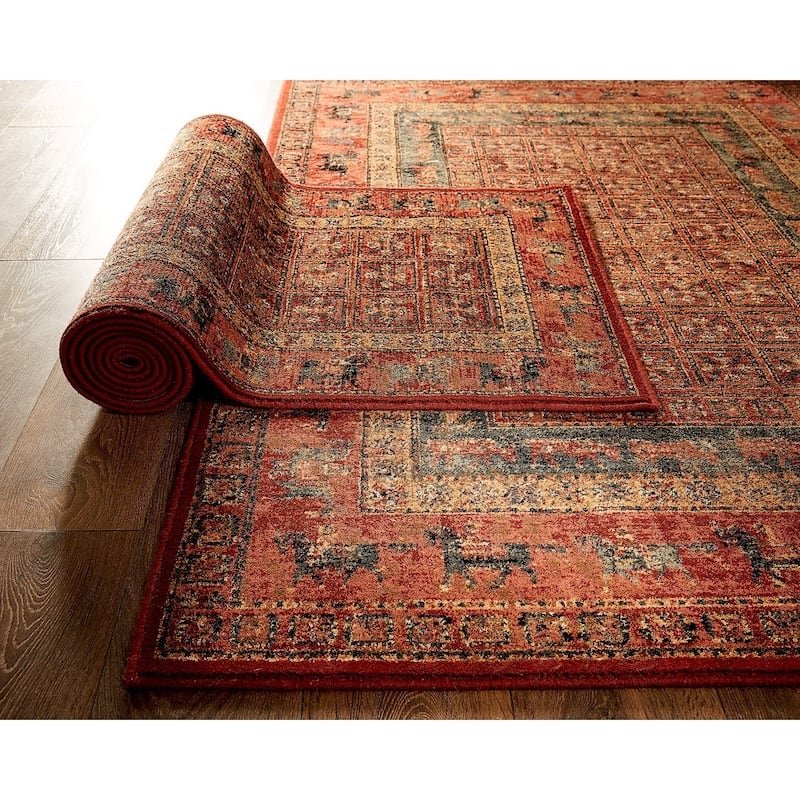A rug can really tie a room together visually and can make it cozy and more comfortable. A new rug is also a big investment. Before you spend the cash for that new rug, you’ll need to consider how you plan to use the space and what you need from the rug.
Choosing a new rug is about more than simply searching for an affordable rug that goes well with your furniture and décor. Your new rug will become an important and practical part of your home furnishings, so choose it with care. Now let’s take a look at some of the things you should think about before buying a new rug.
- Your Own Sense of Style
It might sound obvious, but the first thing you should consider when choosing an area rug is your own personal preference. You are the one who is going to be using the rug, and if you are investing a lot of money in it, you might be using it for a long time. As you go about to follow the easy steps for selecting the right area rug, think about if your personal style is traditional, contemporary, or transitional.
- Cleaning and Care of the Rug
High-quality rugs need to be cleaned regularly and professionally. If the rug is kept in a high-traffic area or is made from natural materials, like wool, that can take on an aroma if not properly cared for, that goes double. A rug that isn’t cleaned at least once, if not twice, a year can become very unsanitary and contaminated with bacteria and other allergens indeed. Make sure you can afford to have the rug you choose cleaned regularly and that you’ll be able to transport it to the cleaners, or have it picked up. Few rugs need less maintenance than others.
- How the Rug Will Be Used
Do members of your household, such as young children and pets, spend a lot of time sitting or playing on the floor? Do you need a colorful accent piece to tie a room together? Low-pile and flat-weave rugs are better for high-traffic areas, while shag or sisal rugs can work well in low-traffic areas. Consider how the rug will be used in order to choose the right one.
- The Room the Rug Will Go In
Definitely, you will need to know how big the selected room is and hash out a floor plan. If you are choosing a living room rug, you will probably want to put all of the sofas and the table on the rug, to delineate the space. If you’re choosing a family room rug, you may want a smaller rug that accommodates just the coffee table. For a front entryway, a very long, narrow rug might be best. In a bedroom, a large rug under the bottom two-thirds of the bed will do, but so will two long runners placed on either side of the bed. Think about the traffic the rug will get, and whether it will get stuck under doors or pose a tripping hazard.

What size rug should I choose for my room?
Choosing the right rug size is essential to ensure it complements your space and enhances the room’s overall aesthetic. The ideal rug size depends on the room’s dimensions, furniture layout, and intended use.
Key tips for selecting the right rug size:
- Measure Your Space: Start by measuring the length and width of the area where the rug will be placed.
- Consider Furniture Placement: In living rooms, rugs should ideally fit under the front legs of sofas and chairs. In dining rooms, rugs should extend at least 24 inches beyond the table edges to allow chairs to move comfortably.
- Leave Borders: Leaving a border of visible floor around the rug (usually 12–24 inches) can make the room feel balanced and spacious.
- Bedroom Placement: For bedrooms, rugs should extend beyond the bed to create a soft landing for feet, typically 18–24 inches on either side.
- Room Function: High-traffic areas may benefit from larger, durable rugs, while smaller accent rugs work well in entryways or cozy nooks.
In short, the perfect rug size balances functionality and visual appeal, ensuring it anchors the room’s furniture while enhancing comfort and style.
frequently asked questions about Things to consider
What size rug should I choose for my room?
Measure your space and consider furniture placement. The rug should complement the room without overwhelming or under-sizing the area.
Which materials are best for rugs?
Natural fibers like wool, cotton, jute, or synthetic options like nylon and polypropylene offer different levels of durability, softness, and maintenance.
How do I choose the right style and color?
Consider your room’s décor, lighting, and color palette. Patterns and textures can enhance or define the space.
What durability factors should I consider?
High-traffic areas require more durable, stain-resistant rugs, while decorative rugs can prioritize aesthetics over heavy-duty wear.
How do I maintain a new rug?
Regular vacuuming, spot cleaning, and professional cleaning when needed help maintain appearance and prolong the rug’s lifespan.
Can rugs be layered?
Yes, layering smaller rugs over larger ones or combining textures can add depth, warmth, and style to your space.
Are there eco-friendly rug options?
Yes, rugs made from natural fibers or recycled materials provide sustainable and environmentally friendly choices.






